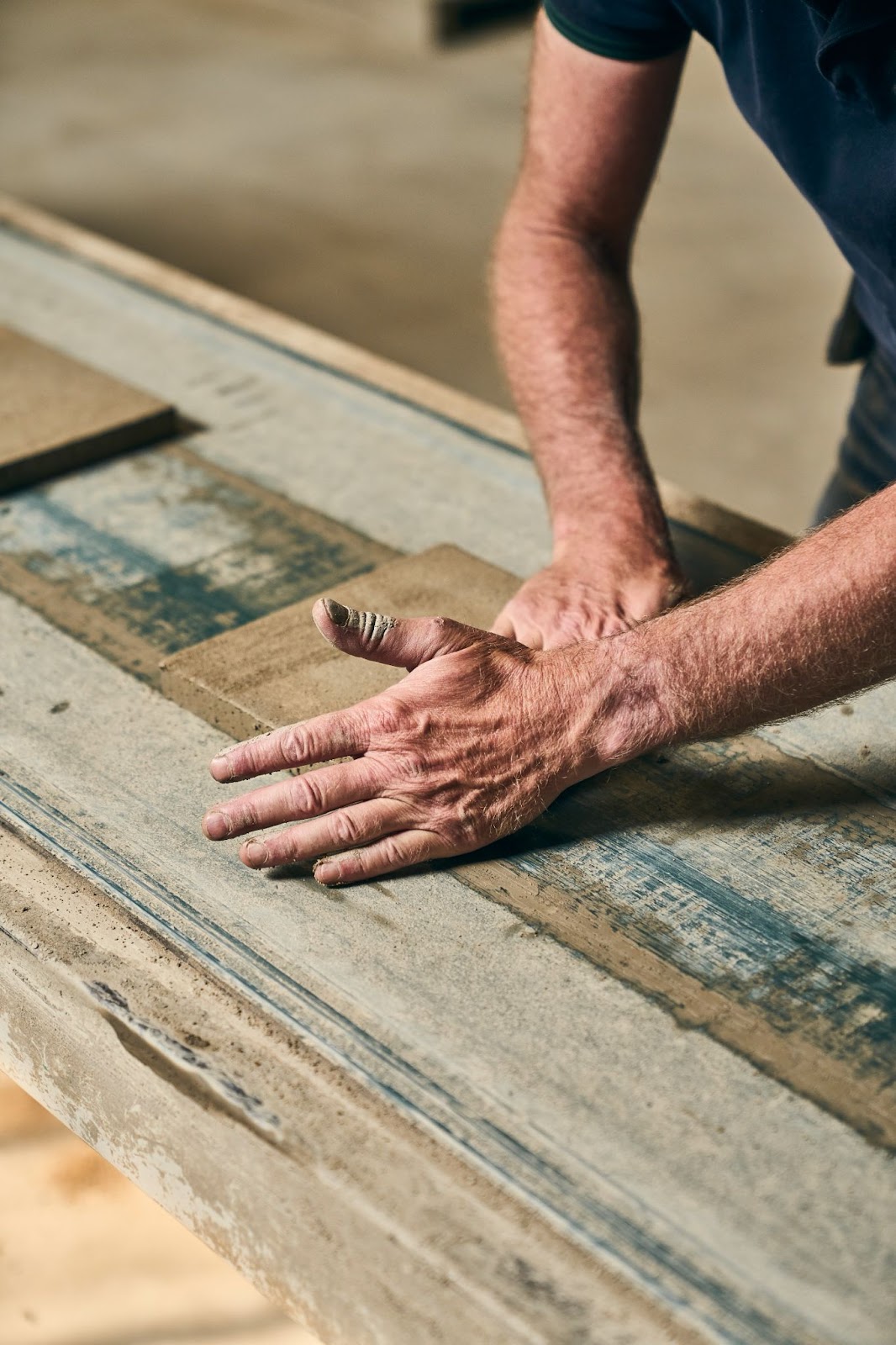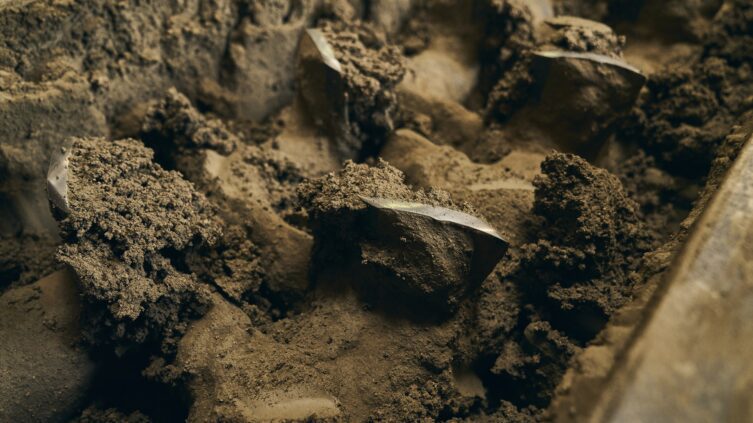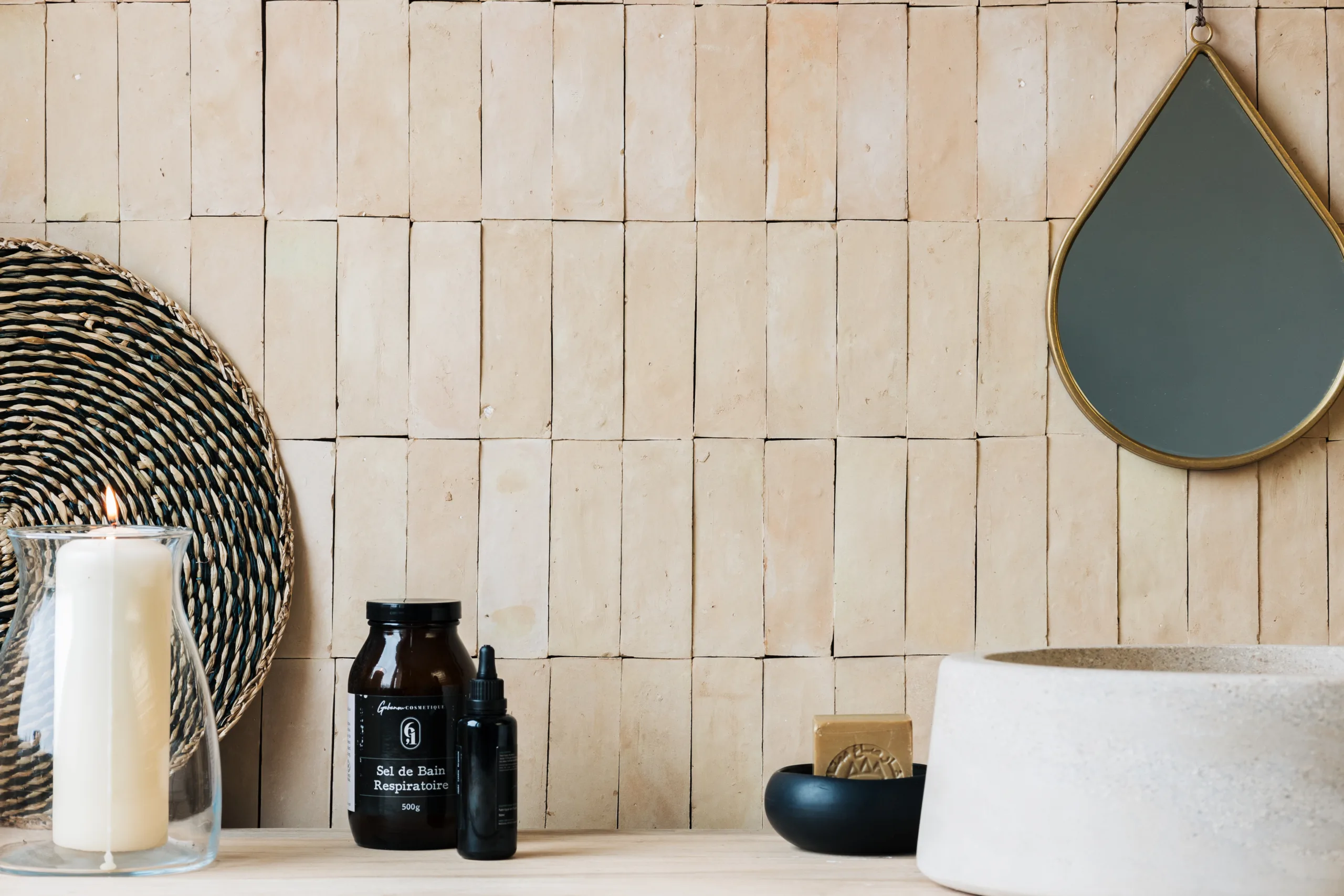What Are the Best Alternatives to Zellige Tiles?
While Zellige tiles are admired for their unique, handcrafted appearance and vibrant colors, several alternatives offer similar aesthetic and functional benefits. Below is an extensive list of the best alternatives to Zellige tiles, including their definitions, characteristics, and suitable applications.

What Are Moroccan Cement Tiles?
Definition: Moroccan cement tiles, also known as encaustic cement tiles, are handmade tiles known for their intricate patterns and vibrant colors. They are made from cement, pigments, sand, and marble powder, and are compressed under high pressure.
Characteristics Compared to Zellige Tiles:
- Durability: Moroccan cement tiles are highly durable and suitable for high-traffic areas, similar to the longevity of Zellige tiles.
- Designs: These tiles are available in a wide range of patterns and colors, often featuring geometric and floral designs, providing a broader range of patterns compared to Zellige tiles.
- Maintenance: Moroccan cement tiles require sealing to prevent staining, similar to the maintenance needs of Zellige tiles.
Applications:
- Floors and walls in kitchens, bathrooms, and entryways.
- Outdoor patios and walkways.
Moroccan cement tiles provide a similar artisanal and colorful look to Zellige tiles but with a more uniform shape and pattern precision.
What Are Terracotta Tiles?
Definition: Terracotta tiles are made from natural clay that is fired at a relatively low temperature, giving them a rustic, earthy appearance. The name “terracotta” comes from the Italian word for “baked earth.”
Characteristics Compared to Zellige Tiles:
- Texture: Terracotta tiles have a rough, porous surface that can be glazed or unglazed, providing a rustic look that complements the artisanal charm of Zellige tiles.
- Colors: Typically available in warm, earthy tones such as reds, browns, and oranges, contrasting the vibrant colors of Zellige tiles.
- Durability: Moderately durable; requires sealing to prevent moisture absorption, much like Zellige tiles.
Applications:
- Floors and walls in kitchens, living rooms, and outdoor spaces.
- Roof tiles and decorative elements.
Terracotta tiles offer a warm, natural aesthetic that complements a variety of design styles, making them a versatile alternative to Zellige tiles.
What Are Subway Tiles?
Definition: Subway tiles are rectangular, usually ceramic tiles that were originally used in early 20th-century subway stations. They have since become a popular choice for residential and commercial interiors.
Characteristics Compared to Zellige Tiles:
- Size: Standard size is 3×6 inches, but available in various sizes, providing more uniformity compared to the handmade variability of Zellige tiles.
- Finish: Typically glossy, but also available in matte finishes, similar to some Zellige tiles’ finishes.
- Installation: Easy to install and clean, offering a simpler maintenance routine compared to Zellige tiles.
Applications:
- Backsplashes in kitchens and bathrooms.
- Wall coverings in showers and other wet areas.
Subway tiles offer a clean, classic look that can complement both traditional and modern design aesthetics, providing a more uniform alternative to the artisanal nature of Zellige tiles.
What Are Mosaic Tiles?
Definition: Mosaic tiles are small tiles, often made of glass, ceramic, or stone, arranged in patterns or images. They are commonly mounted on mesh sheets for easier installation.
Characteristics Compared to Zellige Tiles:
- Versatility: Available in a wide range of materials, colors, and patterns, offering a broader range of design possibilities compared to Zellige tiles.
- Size: Typically small, ranging from 1×1 inch to 2×2 inches, allowing for detailed designs and patterns.
- Durability: Highly durable and resistant to moisture, similar to Zellige tiles’ durability.
Applications:
- Accent walls, backsplashes, and shower floors.
- Artistic installations and decorative borders.
Mosaic tiles can add a unique, artistic touch to any space, similar to the decorative appeal of Zellige tiles, but with more intricate designs.
What Are Porcelain Tiles?
Definition: Porcelain tiles are made from dense, refined clay fired at higher temperatures than ceramic tiles. This process makes them highly durable and water-resistant.
Characteristics Compared to Zellige Tiles:
- Durability: Extremely durable and resistant to moisture, stains, and scratches, often surpassing the durability of Zellige tiles.
- Variety: Available in a wide range of colors, patterns, and finishes, including ones that mimic natural stone and wood, providing more options than Zellige tiles.
- Maintenance: Easy to clean and maintain, offering a lower-maintenance alternative to Zellige tiles.
Applications:
- Floors and walls in kitchens, bathrooms, and commercial spaces.
- Outdoor patios and pool surrounds.
Porcelain tiles offer a durable and versatile alternative to Zellige tiles, suitable for both indoor and outdoor applications.
What Are Natural Stone Tiles?
Definition: Natural stone tiles are made from materials such as marble, granite, limestone, and slate. Each tile is unique, with natural variations in color and texture.
Characteristics Compared to Zellige Tiles:
- Aesthetic: Provides a natural, elegant look with unique veining and color variations, offering a different kind of beauty compared to the uniformity of Zellige tiles.
- Durability: Highly durable but requires sealing to prevent staining and moisture absorption, similar to the maintenance needs of Zellige tiles.
- Maintenance: Requires regular sealing and maintenance.
Applications:
- Floors, walls, and countertops in kitchens and bathrooms.
- Outdoor applications such as patios and walkways.
Natural stone tiles offer a luxurious and timeless appeal, making them a sophisticated alternative to Zellige tiles.
What Are Ceramic Tiles?
Definition: Ceramic tiles are made from natural clay that is molded and fired in a kiln. They can be glazed or unglazed and are available in a wide range of colors and patterns.
Characteristics Compared to Zellige Tiles:
- Versatility: Available in various sizes, shapes, and finishes, offering more design flexibility compared to Zellige tiles.
- Cost-Effective: Generally more affordable than Zellige tiles.
- Maintenance: Easy to clean and maintain.
Applications:
- Walls and floors in kitchens, bathrooms, and living areas.
- Backsplashes and decorative accents.
Ceramic tiles are a versatile and cost-effective alternative to Zellige tiles, suitable for various design styles and applications.
What Are Glass Tiles?
Definition: Glass tiles are made from thin pieces of glass with a translucent or opaque finish. They are often used in mosaic form or as small accent tiles.
Characteristics Compared to Zellige Tiles:
- Reflective: Reflects light, making spaces appear brighter and larger, which can complement the vibrant colors of Zellige tiles.
- Variety: Available in a wide range of colors, sizes, and finishes, offering more modern design options.
- Maintenance: Resistant to stains and easy to clean, similar to Zellige tiles’ easy maintenance.
Applications:
- Backsplashes and accent walls in kitchens and bathrooms.
- Decorative borders and shower walls.
Glass tiles offer a sleek, modern alternative to Zellige tiles, adding brightness and visual interest to any space.
Scientific Research on Tile Materials
Scientific studies have shown that the material composition and manufacturing process of tiles significantly affect their durability, maintenance requirements, and aesthetic appeal. For example, research indicates that porcelain tiles, due to their dense composition and high firing temperatures, exhibit superior resistance to moisture and wear compared to other tile materials (Source: Journal of the European Ceramic Society). Additionally, the porous nature of terracotta and natural stone tiles necessitates regular sealing to maintain their integrity and appearance (Source: Construction and Building Materials).
What Are the Common Applications of Tile Alternatives?
Understanding the suitable applications of various tile alternatives helps in selecting the right material for specific needs. Here are the common applications for the mentioned tile types:
- Walls: Most tile alternatives, including subway, mosaic, and glass tiles, are suitable for wall installations in kitchens, bathrooms, and living areas.
- Floors: Porcelain, natural stone, and terracotta tiles are excellent for flooring applications due to their durability.
- Backsplashes: Subway, glass, and mosaic tiles are ideal for backsplashes in kitchens and bathrooms.
- Accent Pieces: Mosaic and glass tiles can be used as decorative accents to add visual interest to any space.
While Zellige tiles are admired for their unique, handcrafted beauty, there are several alternatives available that offer similar aesthetic and functional benefits. When selecting an alternative, consider factors such as durability, maintenance requirements, and the specific application to ensure the best choice for your design project. For further details and to explore a wide range of Zellige tiles, visit Paris Tiles, a major provider of high-quality Zellige tiles known for their extensive collection and commitment to excellence.




